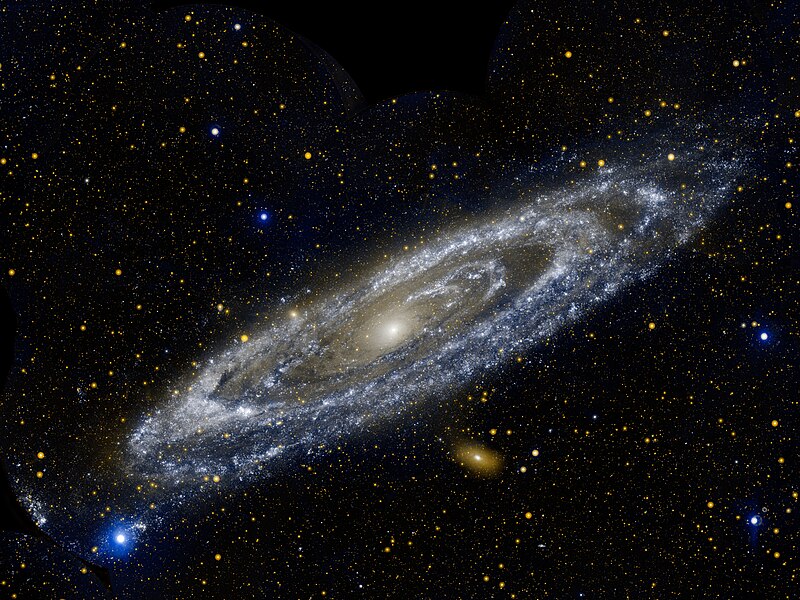Fichier:Andromeda galaxy 2.jpg

Gréisst vun dëser Duerstellung: 800 × 600 Pixel. Aner Opléisungen: 320 × 240 Pixel | 640 × 480 Pixel | 1.024 × 768 Pixel | 1.280 × 960 Pixel | 2.560 × 1.920 Pixel | 6.000 × 4.500 Pixel.
Original Fichier (6.000 × 4.500 Pixel, Fichiersgréisst: 21,44 MB, MIME-Typ: image/jpeg)
Versiounen
Klickt op e bestëmmten Zäitpunkt fir déi respektiv Versioun vum Fichier ze kucken.
| Versioun vum | Miniaturbild | Dimensiounen | Benotzer | Bemierkung | |
|---|---|---|---|---|---|
| aktuell | 10:09, 21. Mee 2012 |  | 6.000 × 4.500 (21,44 MB) | Originalwana | {{Information |Description ={{en|1=Hot stars burn brightly in this image from NASA's Galaxy Evolution Explorer, showing the ultraviolet side of a familiar face. At approximately 2.5 million light-years away, the Andromeda galaxy, or M31, is our [[:C... |
Benotze vu Fichieren
Dës Säit benotzt dëse Fichier:
Globaalt Benotze vum Fichier
Dës aner Wikie benotzen dëse Fichier:
- Benotzt op af.wikipedia.org
- Benotzt op an.wikipedia.org
- Benotzt op ar.wikipedia.org
- Benotzt op bg.wikipedia.org
- Benotzt op de.wikipedia.org
- Benotzt op de.wikibooks.org
- Benotzt op en.wikipedia.org
- Benotzt op eu.wikipedia.org
- Benotzt op fr.wiktionary.org
- Benotzt op hr.wikipedia.org
- Benotzt op it.wikipedia.org
- Benotzt op ja.wikipedia.org
- Benotzt op ko.wikipedia.org
- Benotzt op lv.wikipedia.org
- Benotzt op no.wikipedia.org
- Benotzt op pl.wiktionary.org
- Benotzt op pt.wikipedia.org
- Benotzt op ro.wikipedia.org
- Benotzt op scn.wikipedia.org
- Benotzt op sh.wikipedia.org
- Benotzt op simple.wikipedia.org
- Benotzt op sr.wikipedia.org
- Benotzt op sv.wikipedia.org
- Benotzt op ta.wikipedia.org

